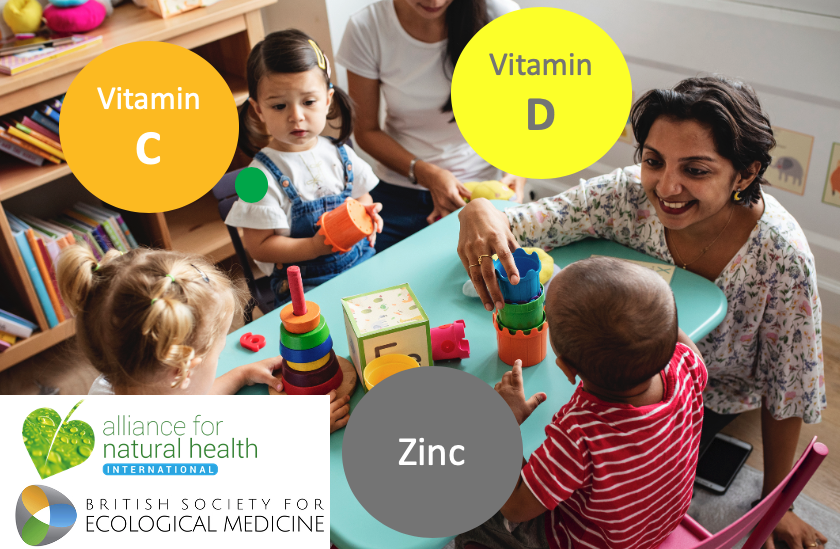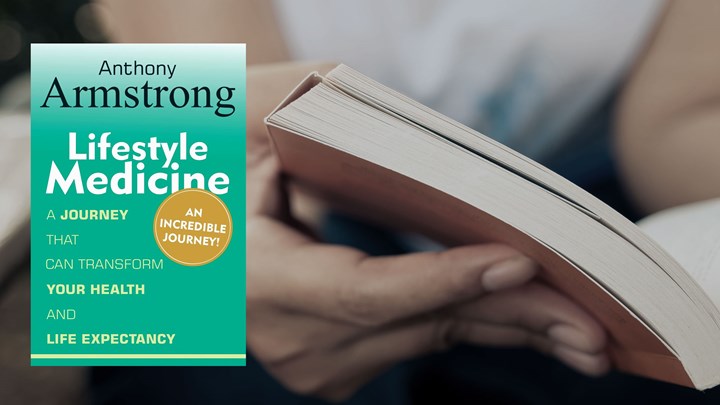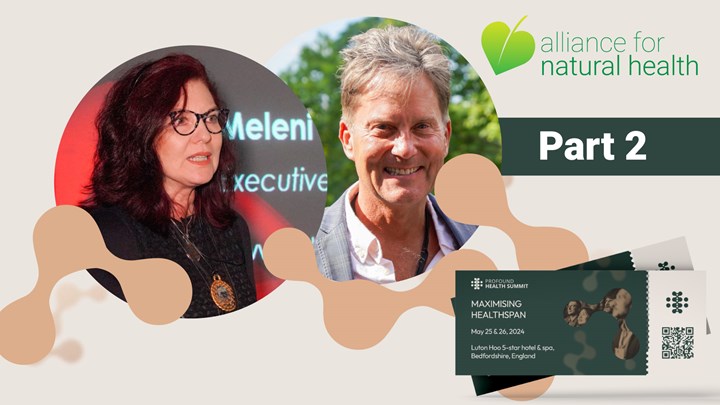Content Sections


In conjunction with the British Society for Ecological Medicine, the main medical doctors' association practising nutritional and environmental (i.e. ecological) medicine, we've produced immune support guidance specifically for children, teachers and families as kids prepare to return to school.
>>> Download PDF of guidance document: Immune Support Protocols to Support a Return to School
>>> Download 1 page print- and share-friendly flyer: Nutritional Protocols for Healthy Immune Systems at School
Multiple sources of evidence suggest that there is no justification for ongoing school closures during the tail of the present Covid-19 pandemic wave. This includes a detailed summary of evidence on the transmission potential and susceptibility of children and other groups to severe disease undertaken by the Royal College of Paediatrics and Child Health,[1] and a major review of the effects of school closures on Covid-19 disease risk and mortality which concluded the evidence of benefit was at best marginal and only when school closures coincided with the peak of infection.[2] Additionally there are genuine concerns that long-term social distancing if applied to reopened schools could lead to significant psychological and emotional harm and damage to children.[3]
UK government guidance for protective measures in education and childcare settings currently proposes a 5 level hierarchy in which efforts are made to minimise contact and mixing “as much as possible….by altering….the environment (such as classroom layout) and timetables (such as staggered break times).”[4]
-
Find related articles, information and videos in our Covid Zone
Based on the lack of evidence of benefit of such social distancing and the risk of harms, the Alliance for Natural Health (ANH) International and the British Society for Ecological Medicine support the reopening of schools with resumption of normal mixing.
However, we advocate a number of additional precautions be taken to minimise risks to staff and children, as well as to guard against any risk of uncontrolled community infection. These include:
- Staff training to help identify Covid-19 symptoms and initiate test, track and trace programme
- Shielding of vulnerable adults and children to minimise SARS-CoV-2 infection risk
- Provision of guidance for immune support for children, the families of children returning to school and staff.
The present briefing document provides guidance for immune support for both children and adults.
The ANH proposed on 21 May[5] an 11-step strategy for school reopening which is summarised in a 2-page sharable infographic.[6] The ANH is fully in support of the proportionate approach to school reopening as proposed by the Us For Them campaign[7] which attempts to balance the risks and benefits of different options while supporting social justice and equity among children.
The present guidance should be considered in the context of the latest UK government guidance for parents and carers in relation to the reopening of schools.[8]
Nutritional immune support guidance
The key elements of any immune support approach should involve three main considerations:
- Maintaining a healthy internal environment of the body – including appropriate nutrition and adequate hydration
- Maintaining a healthy external environment – including minimising unnecessary negative stress, healthy social environments and minimising exposure to environmental chemicals
- Engaging in healthy behaviours –including adequate and regular outdoor physical activity and adequate sleep quality and quantity.
The present guidance concerns itself primarily with nutritional support. The ANH provides guidance on healthy eating both for children and adults, in its Food4Kids[9] and Food4Health[10] guides, respectively. There is a an adapted version of the adult guide for vegans.[11] This guidance seeks to maintain healthy weight, metabolic and immune function by ensuring reduced intakes of common food allergens, the consumption of diverse, nutrient-dense diets with a minimum of added sugars and highly processed foods, enhancing metabolic flexibility and minimising addiction to processed foods.[12]
-
We're funded only by donations. Any amount is welcomed to help us continue our work and make access free
Given the importance of specific micronutrients in maintaining innate immunity and widespread sub-optimal levels of key micronutrients as demonstrated through the rolling UK National Diet and Nutrition Survey,[13] daily supplemental intakes of three micronutrients is strongly recommended to enhance prevention for children and adults in schools and other educational settings where social distancing is not practiced or may be difficult to enforce.
Supplemental recommendations
The following daily dosages for food supplements are recommended for each of the respective age groups. These doses have been increased over those previously recommended by the BSEM given additional experience and research results relating to Covid-19. We suggest that many people find the most practical way of consuming these doses is by addition of ascorbic acid to water and then drinking the 'vitamin C water' in divided doses (on its own or in more water) throughout the day and evening (see notes below table).
>>> Download PDF of guidance document: Immune Support Protocols to Support a Return to School
|
Micronutrient |
Daily dosage of food supplements |
|||
|
Children |
Children |
Children |
Adults (18 years and over) |
|
|
Vitamin D |
20-25 micrograms (800-1000 IU) |
25 micrograms (1000 IU) |
50 micrograms (2000 IU) |
100 micrograms (4000 IU) |
|
Vitamin C* |
2,500 milligrams (half a rounded teaspoon of pure ascorbic acid) daily in divided doses |
5,000 milligrams (1 rounded teaspoon of pure ascorbic acid) daily in divided doses |
7,500 milligrams (1.5 rounded teaspoons of pure ascorbic acid) daily in divided doses |
10,000 milligrams (2 rounded teaspoons of pure ascorbic acid) daily in divided doses |
|
Zinc† |
10 milligrams |
10 milligrams |
15 milligrams |
25 milligrams |
*Vitamin C (ascorbic acid) should be taken throughout the day and evening to maintain blood levels. The daily dose of powder can easily be dissolved in warm water which can then be chilled, diluted to taste and taken throughout the day, in divided doses. It can also be taken in tablet or capsule form, for instance in 500 mg and/or 1000mg capsules several times a day. Note: Too much vitamin C may give you loose bowels. This is not an adverse effect but rather a sign that you have taken enough and can reduce the dose slightly.
† Zinc supplements (e.g. citrate, monomethionine forms) should preferably be consumed with main meals that do not contain cereals or grains given these can reduce zinc absorption. Alternatively, zinc gluconate may be consumed between meals in lozenges.
Value for money
Given most countries won't sanction handing out vitamins and minerals to children at the expense of the public purse, we did some UK-specific research on how much it might cost parents to give their kids and themselves what we regard as the three most important micronutrient supplements for immune system support and covid prevention. We looked at products containing vitamins C and D and zinc, selling in three outlet types: major multiples, health stores and online.
The results showed that vitamin C could be purchased per 500 mg dose unit for as little as 2.5 pence, vitamin D for 1.7 pence per 25 mcg (1000 IU) dose unit and zinc for just 0.8 pence per 10 mg dose unit. However the quality between the various products varies hugely. Our advice is to try to take the most natural forms of the supplements, avoid the less well absorbed forms of minerals (e.g. zinc oxide), and consume the least or no non-nutritive additives.
You can download our Excel spreadsheet that includes our analysis. It has three tabs that allow you to access selected vitamin C, vitamin D and zinc containing products, including a list of all the ingredients. We have also provided in the spreadsheet our subjective analysis of the quality of the products based on nutrients forms and composition, using a 3-step grading system from good, to intermediate, to not recommended, especially for children.
You'll note that based on our own subjective assessment of quality based on label claimed composition, the lowest quality products were by and large found in the major multiples, with the highest quality products being found in health stores - and, in among the Wild West of the internet, also online.
However, you look at it, these three micronutrients can provide very low cost prevention in the face of concerns over SARS-CoV-2 infection.
>>> For more information, search our website, that of the British Society for Ecological Medicine, and our portal, Covid Zone, that curates all relevant content on Covid-19.
References
[1] RCPCH Covid-19 research evidence summary, May 2020.
[2] Lancet Child Adolesc Health. 2020; 4(5): 397-404.
[3] Lancet Child Adolesc Health. 2020; 4(6):421.
[4] Department of Education guidance: Guidance -Coronavirus (COVID-19): implementing protective measures in education and childcare settings, 12 May 2020.
[5] ANH website article and video: ‘Should schools reopen?’, 21 May 2020.
[6] ANH 2-page infographic: 11-step strategy for school reopening, 21 May 2020.
[7] Us For Them website: https://www.usforthem.co.uk/.
[8] Department of Education Guidance - What parents and carers need to know about schools, colleges and other education settings during the coronavirus outbreak, 12 May 2020..
[10] ANH Food4Health guide.
[11] ANH Food4Health vegan guide
[12] Ifland, J, Marcus MT, Preuss HG (Eds). Processed Food Addiction: Foundations, Assessment, and Recovery. CRC Press. [Amazon UK].








Comments
your voice counts
29 May 2020 at 2:19 am
You asked 5teh Q.. WHY.. isn’t being placed on helping people improve their immunity . Quite simply because Big Pharma deem it to be so. Docs at Med Us are taught the outdated, total baloney calories, cholesterol, food groups and pyramid, RDAs and DON'T SUPPLEMENT mantra. I challenged the Prof of Nutrition at a famous Med U as to why she taught what she well knew to be baloney, and she admitted sh e had to teach.. what was in the book. Who mainly funds the Med Us? Big Pharma. Who do you think calls the shots that ensure the docs get and then pass on pass on this garbage , to trusting public, that in turn ensures they end up sickly, weak, overweight and later medicated for life. My son, at the Vienna Med. U received 10 minutes of nutrition, not quite the average of 6 days they get in 6 years. Note1.. To reach the optimum D3, blood level of 60ngms/mL of blood, adults need to take 8-10,000iu of D3,. At these higher levels one must also to take Vit.K to prevent calcium being forced into artery walls. Also..
avoid synthetic, almost useless ands TOXIC Vit.D2 as found i8n many commercial formulas. Note2. At these fabulous Vit.C levels, one should take the gut friendly buffered Vit..C. (You can add bicarb, citrates etc to buffer it). According to Clark H R, PhD ND, 3 gms of Vit. C fully revs-up the killer white blood cells, the CD4, CD8 and CD14 leucocytes, (Synchrometer testing). In sickness. animal studies showed that up to 5X that much Vit.C is needed. This immune boost also needs organic germanium and organic selenium, from well-chewed tablespoon of peanuts or 2 Brazils, or from supplements.
Your voice counts
We welcome your comments and are very interested in your point of view, but we ask that you keep them relevant to the article, that they be civil and without commercial links. All comments are moderated prior to being published. We reserve the right to edit or not publish comments that we consider abusive or offensive.
There is extra content here from a third party provider. You will be unable to see this content unless you agree to allow Content Cookies. Cookie Preferences